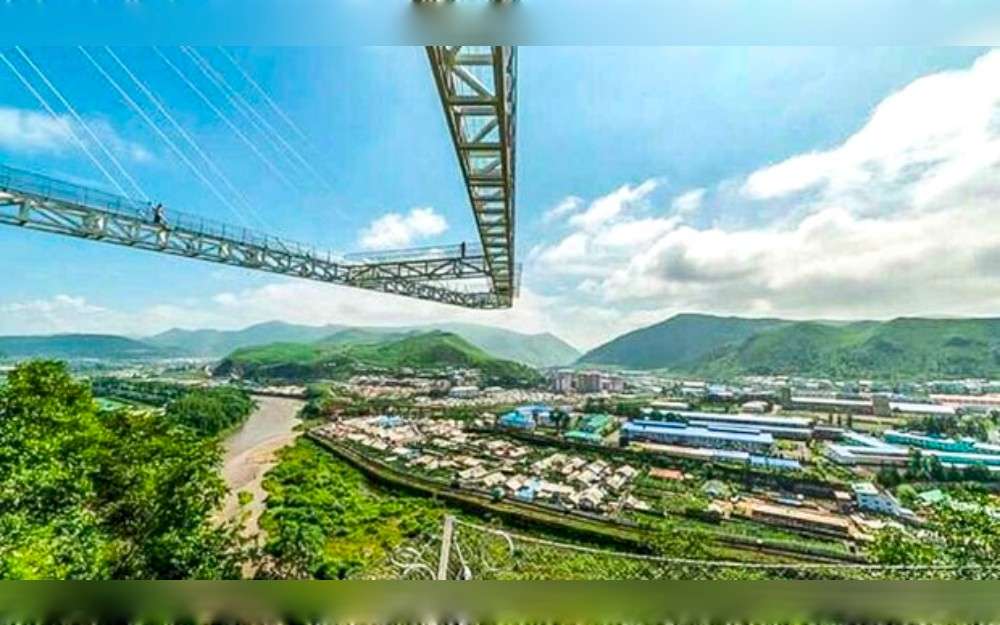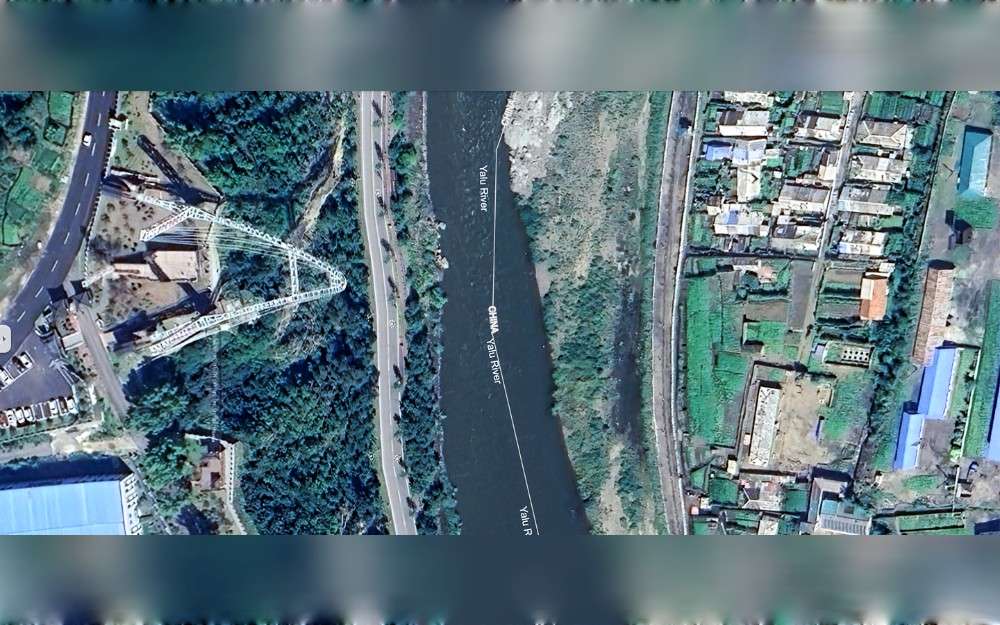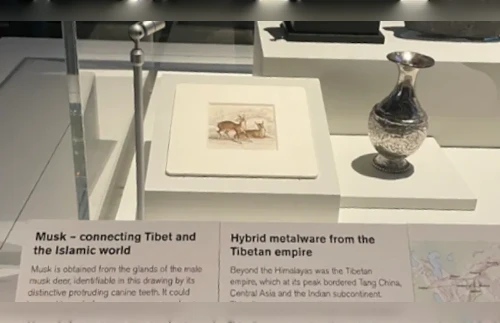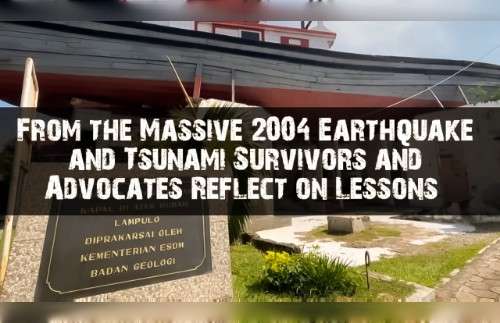Tower at Changbai Millennium Cliff City shuttered after hostility between North Koreans and Chinese tourists.
By Moon Sung Hui for RFA Korean

A gigantic steel tower in China – part of a tourist attraction with views into the North Korean city of Hyesan – that leans almost over the Yalu River between the two nations could be demolished after several tense interactions between Chinese tourists and North Koreans below, residents in both countries told Radio Free Asia.
The 50-meter-tall, 70-meter-long (164-foot-tall, 230-foot-long) tower is part of the Changbai Millennium Cliff City built in 2021 in the town of Malugou in the Changbai Korean Autonomous County in China’s northeastern province of Jilin.
The tower’s glass-floor bridge that looks over the river and into Hyesan is the tourist complex’ main attraction. Using binoculars, visitors can peer into North Korea to catch a glimpse of life in one of the world’s most isolated countries.
The complex also has a ferris wheel and a catapulting swing ride that launches visitors towards the border.
Chinese tourism to North Korea has been shut down since the start of the COVID-19 pandemic in 2020, and the tower was a popular attraction that offered glimpses of North Korea for just 7 yuan (US$1).
‘Illegal structure’
But the tower ceased operations on March 15, a resident of Chiangbai, who requested anonymity for personal safety, told RFA Korean. He said authorities shut it down for safety reasons and he does not know when it will operate again.
“North Korean authorities considered the steel tower an illegal structure that violates the border management agreement and have insisted on its demolition,” the resident said.

The tower is popular among the tourists who come to China to visit Mt. Paektu, he said.
The peak, which straddles the border between China and North Korea, is the tallest mountain on the Korean peninsula and is considered the setting of myths about the origin of the Korean people.
The tower was built by a wealthy businessman from Yanji city in the Yanbian Korean Autonomous Prefecture with his own money, he said.
“If you climb up the steel tower, which is designed to be climbed on foot, you can observe living conditions in Hyesan City, Ryanggang Province, North Korea, as vividly as if you were seeing it right before your eyes.”
Throwing rocks and bottles
A contributing factor behind its closure appears to be a series of hostile exchanges between people on the tower and those below, another Changbai resident said.
“In September last year, three North Korean border guards aimed their automatic rifles at tourists on the steel tower,” he said.
In another incident, a North Korean college student threw rocks in the direction of the tower when tourists were taking pictures of him – who then responded by throwing water bottles and banana peels at the student, an official from a judicial agency in North Korea’s Ryanggang province said.
The North Korean side “issued a warning to Chinese public security agencies that if this repeatedly occurs, a conflict between the two countries could develop later,” he said.
A sign was installed on the tower that told visitors not to shout or throw objects at any North Koreans they could see.
And at one point, officials from both sides met and blamed each other, so reached no conclusion, the second Changbai resident said.
Because of the tower, people on the ground feel almost like zoo animals, the North Korean official said.
“Since our living conditions are so poor in North Korea, they are taking pictures from the steel tower as if they are observing a group of uncivilized animals,” he said.
The North Korean side argues that the tower violates an agreement signed in 2009 that says neither North Korea nor China can install propaganda materials that slander each other or threaten the regime on the border, nor can they place facilities that insult or hate the other side on the border, he said.
They are asking the Chinese side to demolish the tower completely, he said.
Translated by Claire S. Lee. Edited by Eugene Whong.
“Copyright © 1998-2023, RFA.
Used with the permission of Radio Free Asia,
2025 M St. NW, Suite 300, Washington, D.C. 20036.
https://www.rfa.org.”













